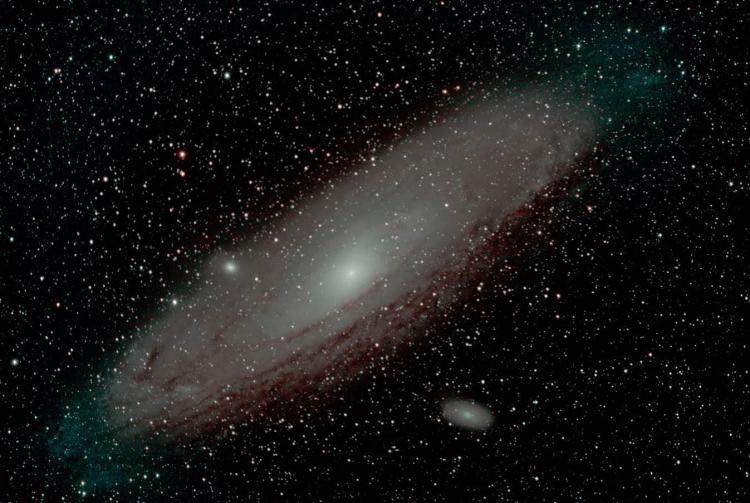What's it take to capture a picture?
Milky Way, the galaxy where we live, spread all the way across the sky as seen from a field near Norwood on the night of 27/28 August. Off to the side of the bright band a small patch could be seen, light from our astronomical neighbor, the Andromeda Galaxy. Andromeda is commonly cited as the most distant object we can see with an unaided eye. Photons that stimulate our eyes left that galaxy 2,5000,000 years ago. Norwood is a special place. Almost everywhere else when a cloud passes by at night it looks bright against the sky since it is illuminated from lights on the ground — not the case here. When a cloud passed by in the middle of the night it appeared dark in front of the stars from horizon to horizon.
The project that particular night was to take advantage of the dark sky to try out a new camera by photographing Andromeda. The camera was purchased on-line and looks like others seen around the necks of tourists except that this one is modified to better see a particular red light emitted from Hydrogen atoms that are present everywhere in the universe. The camera ‘lens’ is an 8-inch diameter telescope, small enough to easily carry from the car in one hand and attach to an equatorial mount. Equatorial means that the telescope mount has two crosed axles, one of which is adjusted to point towards the north star. By rotating about that axis, Earth’s rotation is almost exactly compensated and the telescope continues to point in the direction of Andromeda. Guiding accurately enough to take sharp photographs 2-minutes long requires even more accuracy and therefore a second telescope and small camera ride piggy back on the main telescope. A computer reads out images from the small camera every second, checks the position of a star in that image and sends corrections to the equatorial mount to keep the star and Andromeda perfectly centered. While continuing to guide, the computer tells the main camera when to start and end the long exposures and stores the images. On that night while Andromeda was high overhead, 62 individual images were recorded.
Then came the computer task at home to create a single image from those 62. Each image had to be patched to correct for bad pixels that show up in long exposures. They were corrected for the varying sensitivity of the camera and telescope across the images. Another program perfectly aligned each image with all the others, and added up all the images to create a single one with much more sensitivity and detail than could be seen in any individual image. The last step was to enhance the range of brightness so that both faint details around the edge of the galaxy as well as the really bright nucleus could both be seen. Due to the help from my hosts Woody Woods and Bob Grossman and the dark Norwood sky creating this image was a success.


